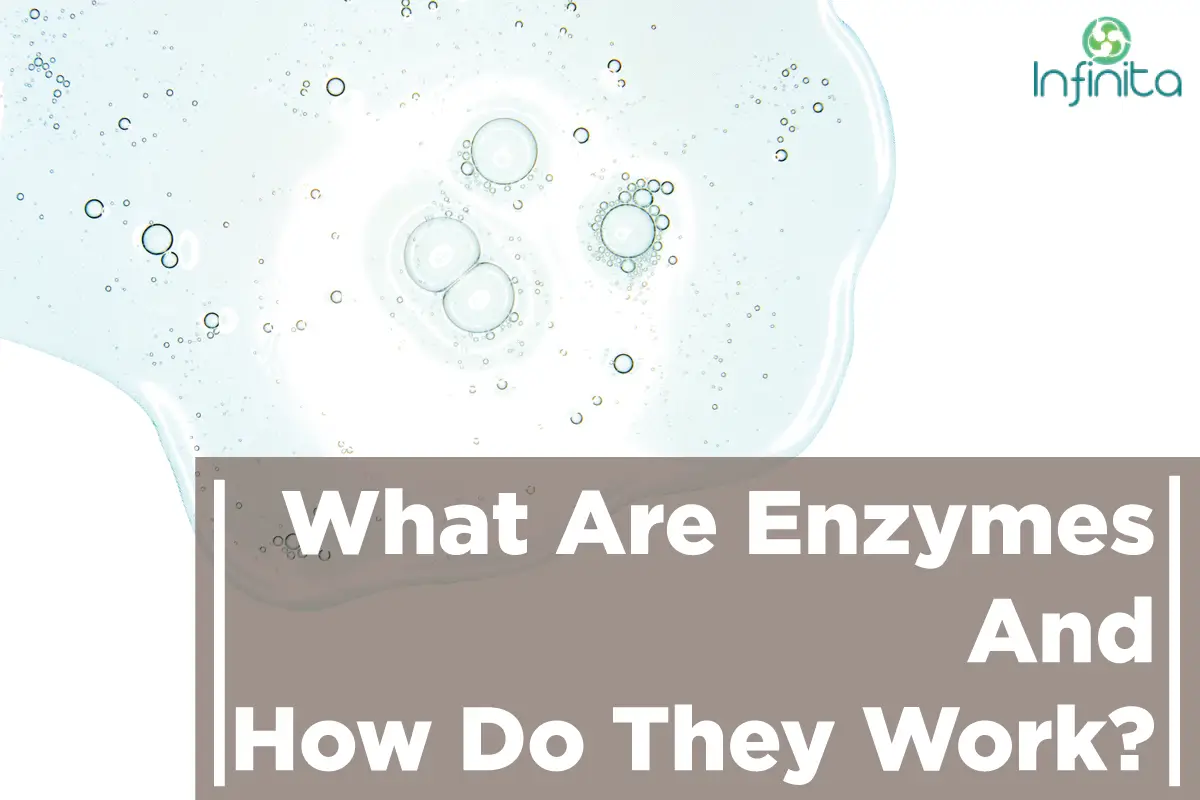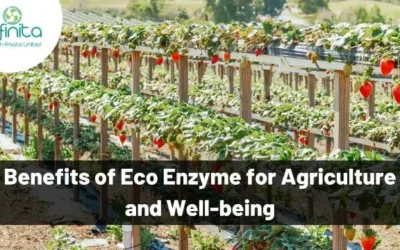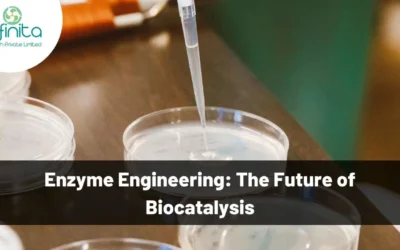Enzymes are a type of protein present in all living things. They are secreted by the source and are biological catalysts, increasing the rate of chemical reactions without undergoing any permanent change themselves. They continue to work as long as the “substrate” is present. Enzymes are biological molecules (typically proteins) that significantly speed up the rate of virtually all of the chemical reactions that take place within cells.
They are vital for life and serve a wide range of important functions in the body, such as aiding in digestion and metabolism. Some enzymes help break large molecules into smaller pieces that are more easily absorbed by the body. Other enzymes help bind two molecules together to produce a new molecule. Enzymes are highly selective catalysts, meaning that each enzyme only speeds up a specific reaction.
Biological Sources of enzymes
Enzymes can be produced from animal, bacterial, fungal, yeast and plant sources. They can be Kosher, Halal, and GRAS or industrial grade. They come in dry and liquid forms. The molecules that an enzyme works with are called substrates. The substrates bind to a region on the enzyme called the active site. There are two theories explaining the enzyme-substrate interaction.
-
Lock-And-Key Theory:
This is one of the theories that explain the working mechanism of enzymes. As per this theory, each enzyme has a specific area (called active site) that is meant for a particular substrate to get attached. The active site of the enzyme is complementary to a specific part of the substrate, as far as the shapes are concerned. The substrate will fit into the active site perfectly, and the reaction between them takes place.
The right substrate will fit into the active site of the enzyme and form an enzyme-substrate complex. It is at this active site that the substrate is transformed into usable products. Once the reaction is complete, and the products are released, the active site remains the same and is ready to react with new substrates. This theory was postulated by Emil Fischer in 1894. This theory provides a basic overview of the action of enzymes on the substrate. However, there are certain factors that remain unexplained. As per this theory, the amino acids (in the unbound state) at the active site are responsible for their specific shape. There are certain enzymes that do not form any shape in the unbound form. The lock and key theory fails to explain the action of such enzymes.
-
Induced-Fit Theory:
This theory was formulated by Daniel E. Koshland, Jr. in 1958. This theory too supports the lock and key hypothesis that the active site and substrate fit perfectly, and their shapes are complementary. According to the induced-fit theory, the shape of the active site is not rigid. It is flexible and changes, as the substrate comes into contact with the enzyme.
To be more precise, once the enzyme identifies the right substrate, the shape of its active site changes so as to fit the latter exactly. This results in the formation of the enzyme-substrate complex and further reactions. As this theory explains the working mechanism of numerous enzymes, it is more widely accepted than the lock and key hypothesis.
What Determines An Enzyme’s Effectiveness?
- Type of substrate and concentration: protein, carbohydrate, fat
- Enzyme specificity
- Enzyme dose
- pH: acid, neutral, basic
- Time
- Temperature
- Inhibitors: bleach, pasteurization temperature, etc
There Are Six Key Types Of Enzymes In Organic Chemistry
These categories are organized according to how the enzyme works on a molecular level. They are important to your understanding of organic chemistry (learn more with this course). These six types of enzymes are as follows: oxidoreductases, transferases, hydrolases, lyases, isomerases, and ligases. Hydrolases are the most common type, followed by oxidoreductases and transferases. They account for over half of the known enzymes.
-
Oxidoreductases
Oxidoreductases catalyze oxidation or reduction reactions. These reactions involve the transfer of electrons from one molecule (the reductant) to another (the oxidant). These reactions are vital to life for their role in essential metabolic processes like glycolysis, which occurs in nearly every organism on the planet.
-
Transferases
The transferase enzymes catalyze the transfer of a functional group (such as methyl) from one molecule to another. The first molecule is called the donor and the second molecule is called the acceptor. These transfer processes are some of the most basic and vital reactions in life.
-
Hydrolases
The hydrolases bring about hydrolysis: this is the breaking of chemical bonds with the addition of water. There is a wide variety of identified hydrolases, over 200 of them, from those that break down proteins to those that cleave ester bonds and more. Exohydrolase enzymes cut the molecules at the end of the chain, and endohydrolase enzymes do so in the middle of the chain.
-
Lyases
Lysis reactions – those that generate a double bond – are brought about by lyase enzymes. Lysis reactions are the kind of elimination reactions that are not hydrolytic or oxidative. The lyases are also sometimes called synthase enzymes. A Michael addition – the reverse reaction – is also possible. However, two substrates are required for the reverse reaction to happen, whereas one substrate is required for the lysis reaction. This makes lyases unique among enzymes.
-
Isomerases
The isomerase enzymes catalyze structural changes within a molecule – this just brings about a change in shape since there is only one substrate and one product with nothing gained or lost. Within this category, there are a few sub-categories depending upon their effect. There are geometric, structural, enantiomer, and stereoisomer isomerases.
-
Ligases
Ligation is brought about by ligase enzymes. Ligation occurs when two substrates are joined together. Chemical potential energy is usually required for this reaction to occur, so it is often paired with the hydrolysis of a diphosphate bond. DNA ligase – which catalyzes the ligation or repair of breaks in DNA – is an example of a vital enzyme in this category.
The work that enzymes do in making cellular activity – and all life – possible is one of the key concepts of biochemistry. Each living cell contains a multitude of biochemical actions. The chemical and physical changes that go on categorize something as organic life. The creation of new tissue, the replacement of old tissue, the conversion of food into energy, the disposal of waste, and reproduction: are all characteristics of life.
Properties of Enzymes
-
Proteinous nature:
Nearly all enzymes are proteins although some catalytically active RNA molecules have been identified.
-
Colloidal nature:
In the protoplasm, enzymes exist as hydrophilic colloids. Due to their colloidal nature, they are isolated by dialysis.
-
Substrate specificity:
A given enzyme only catalyzes one reaction or a similar type of reaction. For example, maltase acts only on maltose while pancreatic lipase acts in a variety of fats. Sometimes, different enzymes may act on the same substrate to produce different end products. The substrate specificity of the enzyme is based on the amino acids sequence in the catalytic site as well as the optical isomeric form of the substrate.
-
Catalytic properties:
– Enzymes require small concentrations for any chemical change.
– They don’t initiate the catalysis but accelerate the rate of catalysis by lowering the activation energy.
– They remain unchanged at the end of the reaction.
– Their presence doesn’t alter the properties of end products.
– They accelerate the forward or reverse reactions to attain the equilibrium but don’t shift the equilibrium.
– Usually, enzyme-catalyzed reactions are reversible, but not always.
– They require hydration for activity.
-
Turn-over Number (Enzyme efficiency):
It is the number of substrate molecules changed per unit of time per enzyme. The typical turnover number varies from 102 to 103 sec-1. For example, the turnover number for sucrase is 104, which means, one sucrase molecule converts 10,000 sucrose into products. Similarly, it is 36 million for carbonic anhydrase (the fastest enzyme) and 5 million for catalase (2nd fastest enzyme). Enzyme efficiency is very low in Lysozyme.
-
Sensitivity:
Enzymes are highly sensitive to changes in pH, temperature, and inhibitors. Enzymes work best at a narrow range of conditions called optimum.
(i) Temperature:
The optimum temperature of enzymes is 20-35°C. They become inactivated at very low temperatures and denatured (destroyed) at very high temp i.e. greater than 45°C. Low molecular weight enzymes are comparatively more heat stable. In archebacterium Pyrococcus furious, the optimum temperature of hydrogenise is greater than 95°C. This heat-stable enzyme enables Pyrococcus to grow at 100°C.
(ii) pH:
The optimum pH of most endoenzymes is pH 7.0 (neutral pH). However, digestive enzymes can function at different pH. For example, salivary amylase act best at pH 6.8, pepsin act best at pH 2, etc. Any fluctuation in pH from the optimum causes the ionization of R-groups of amino acids which decreases the enzyme activity. Sometimes a change in pH causes the reverse reaction, e.g. at pH 7.0 phosphorylase breaks down starch into glucose 1- phosphate while at pH5 the reverse reaction occurs.
(iii) Inhibitors:
Enzymes are also sensitive to inhibitors. Inhibitors are any molecules like cellular metabolites, drugs, or toxins that reduce or stop enzyme activity. Enzyme inhibitors are of 2 types i.e. reversible and irreversible.







